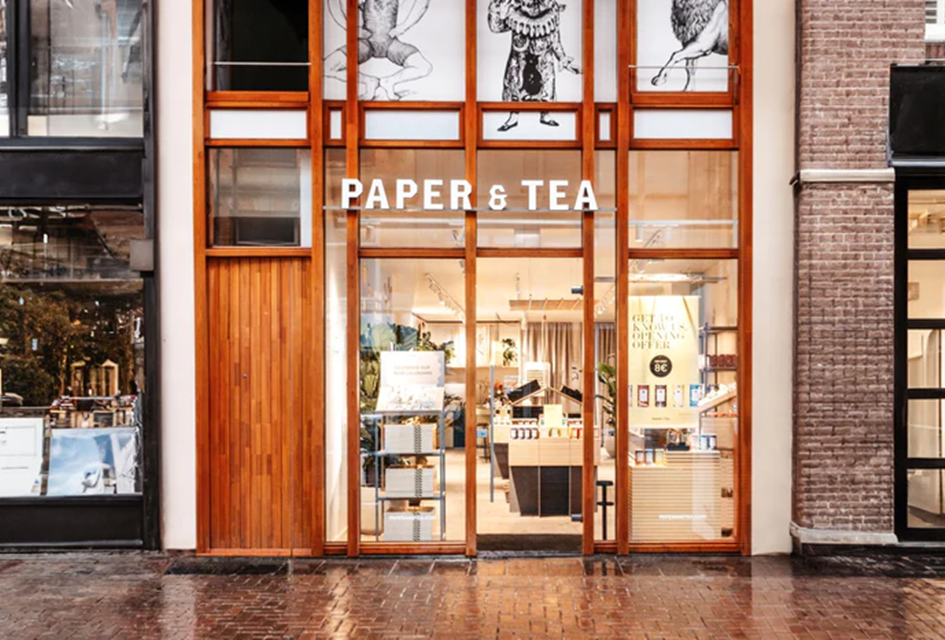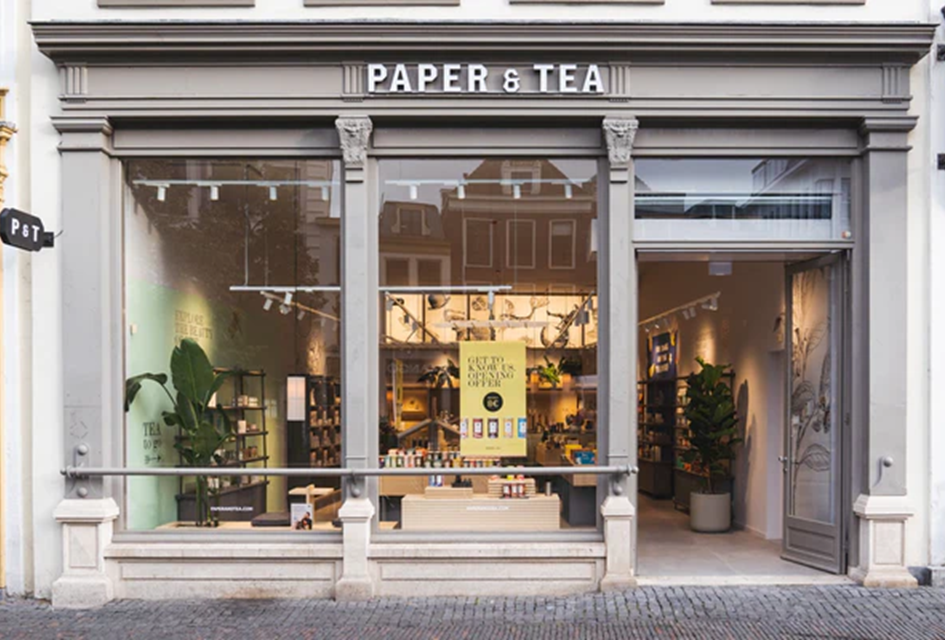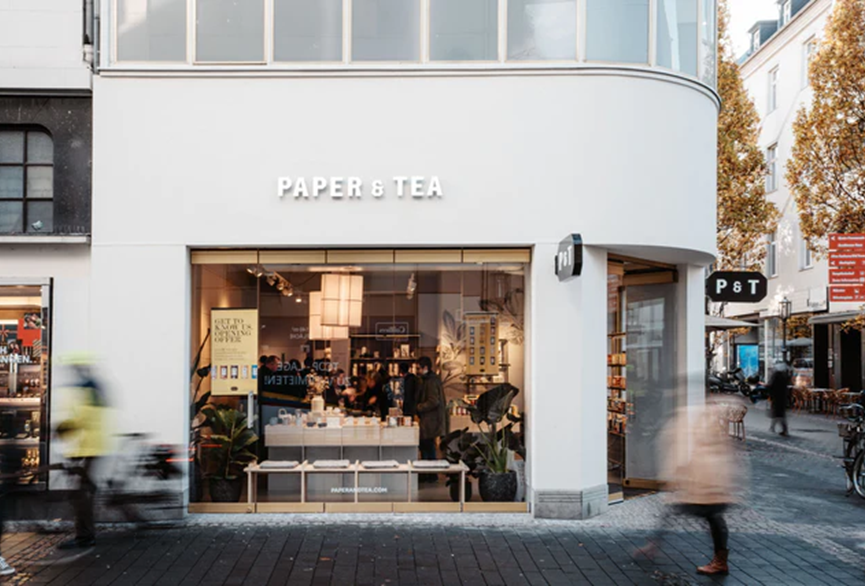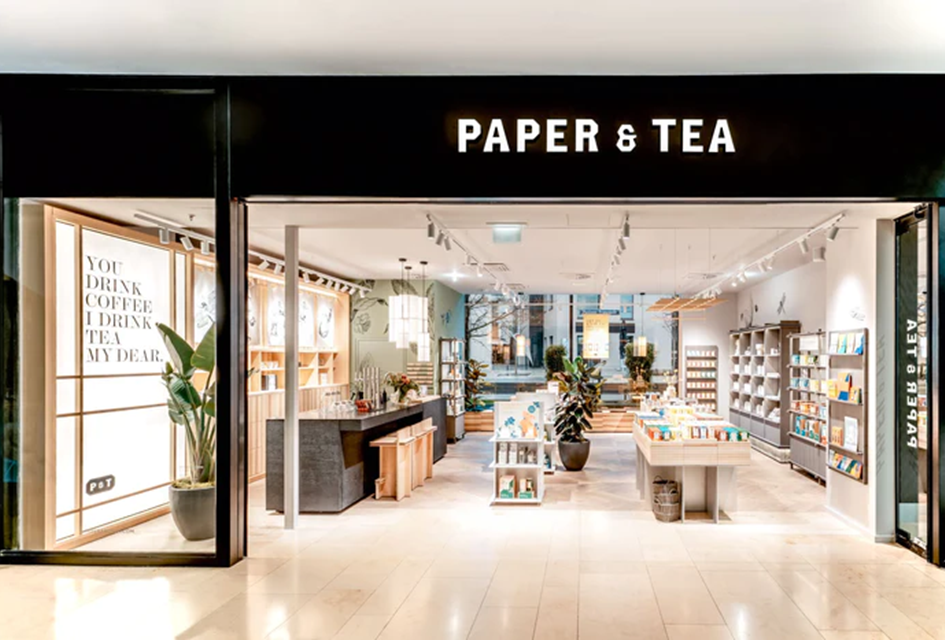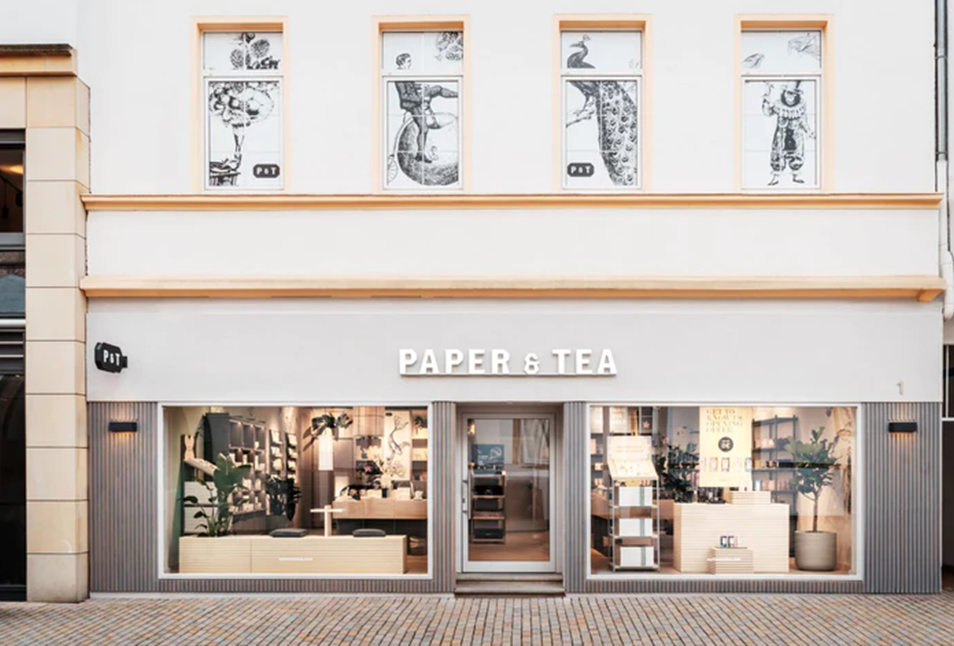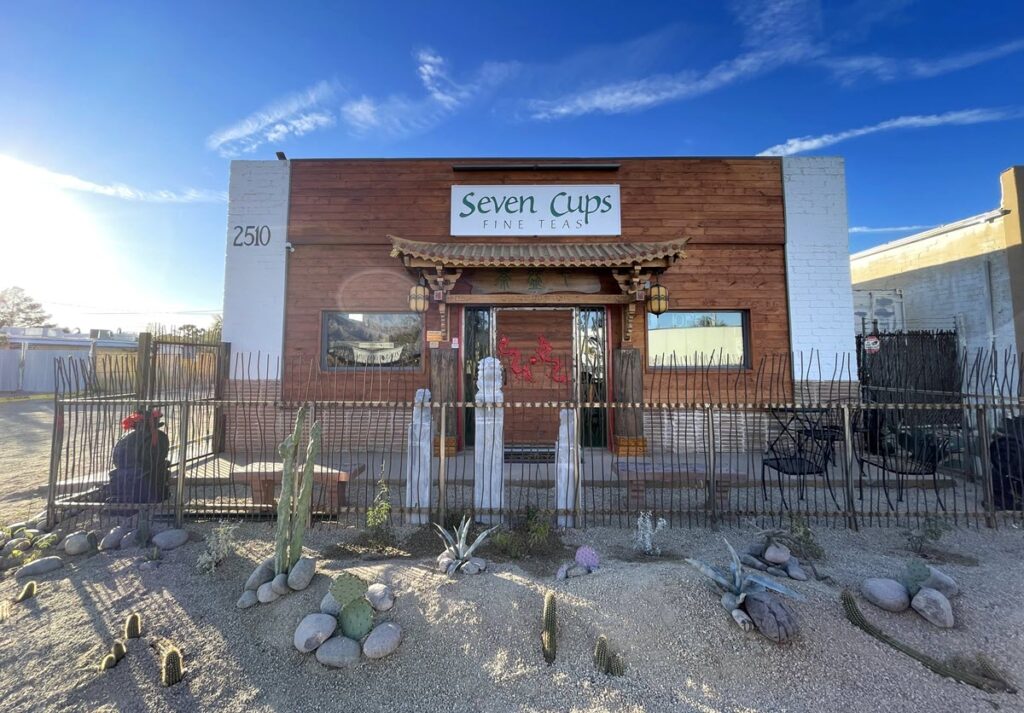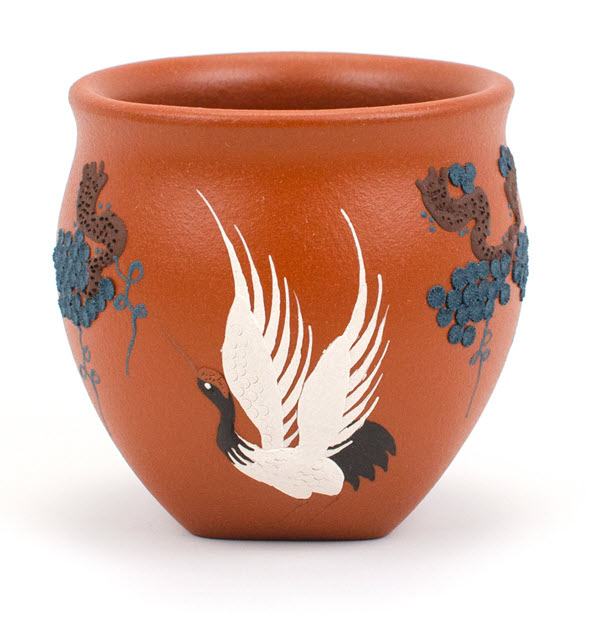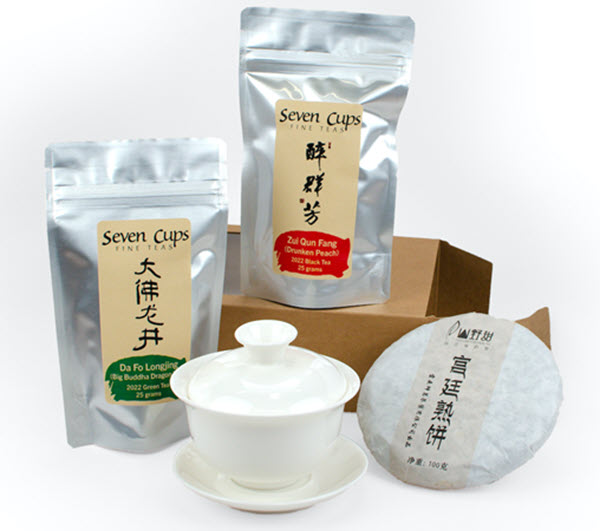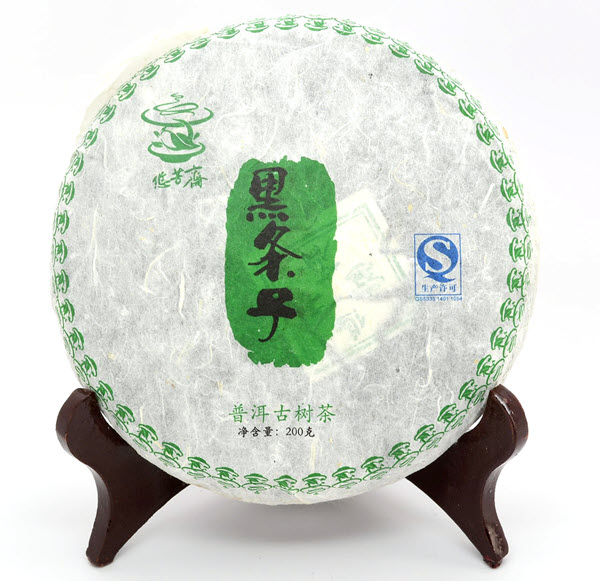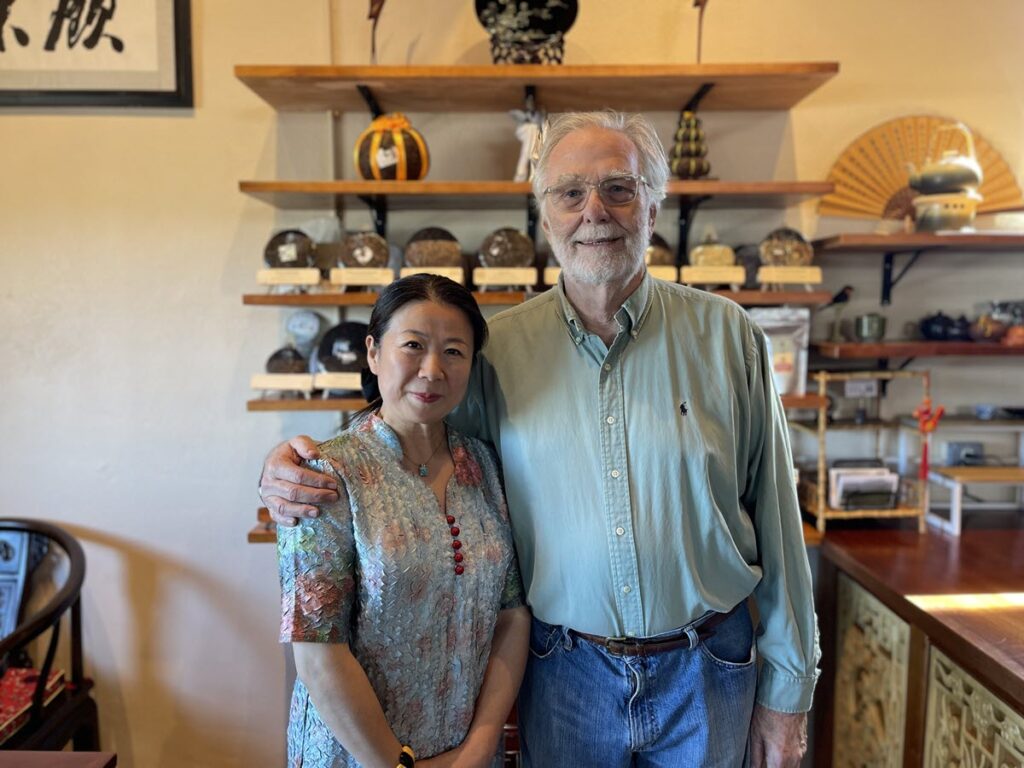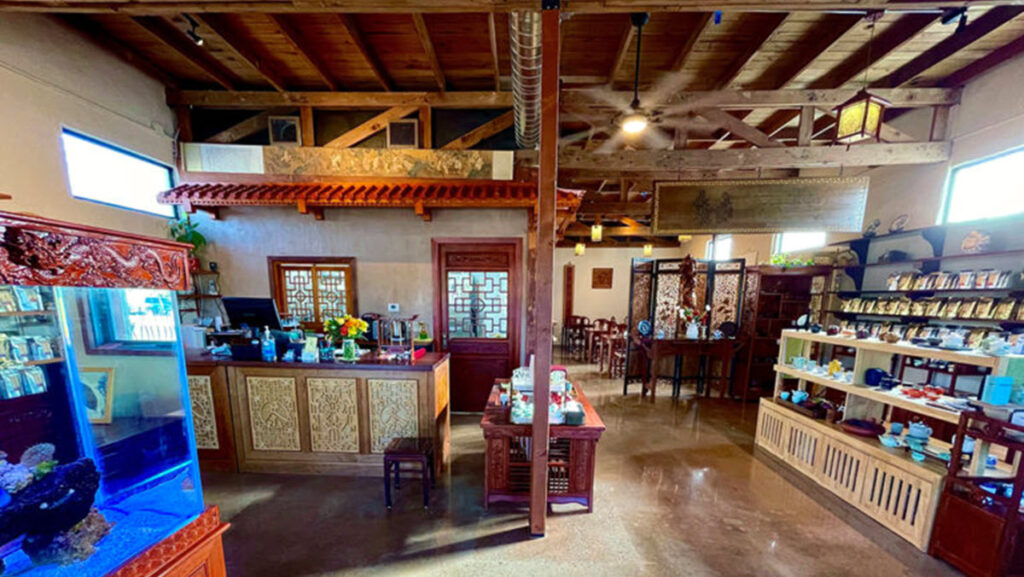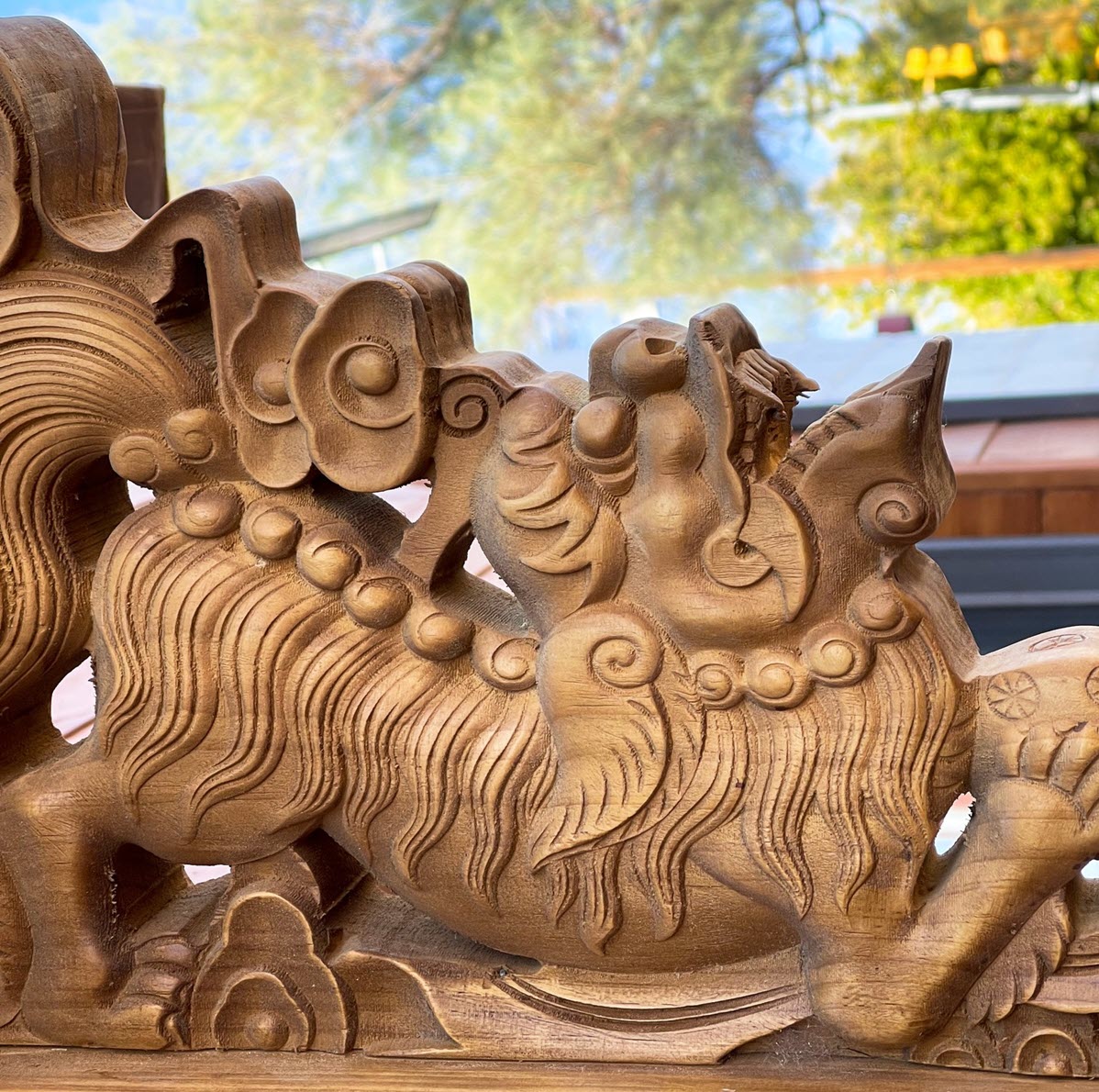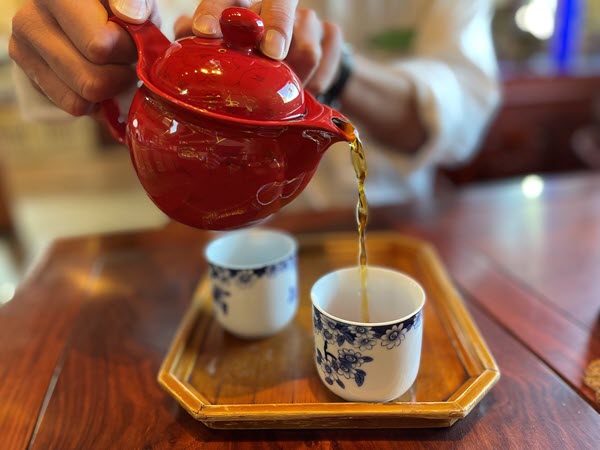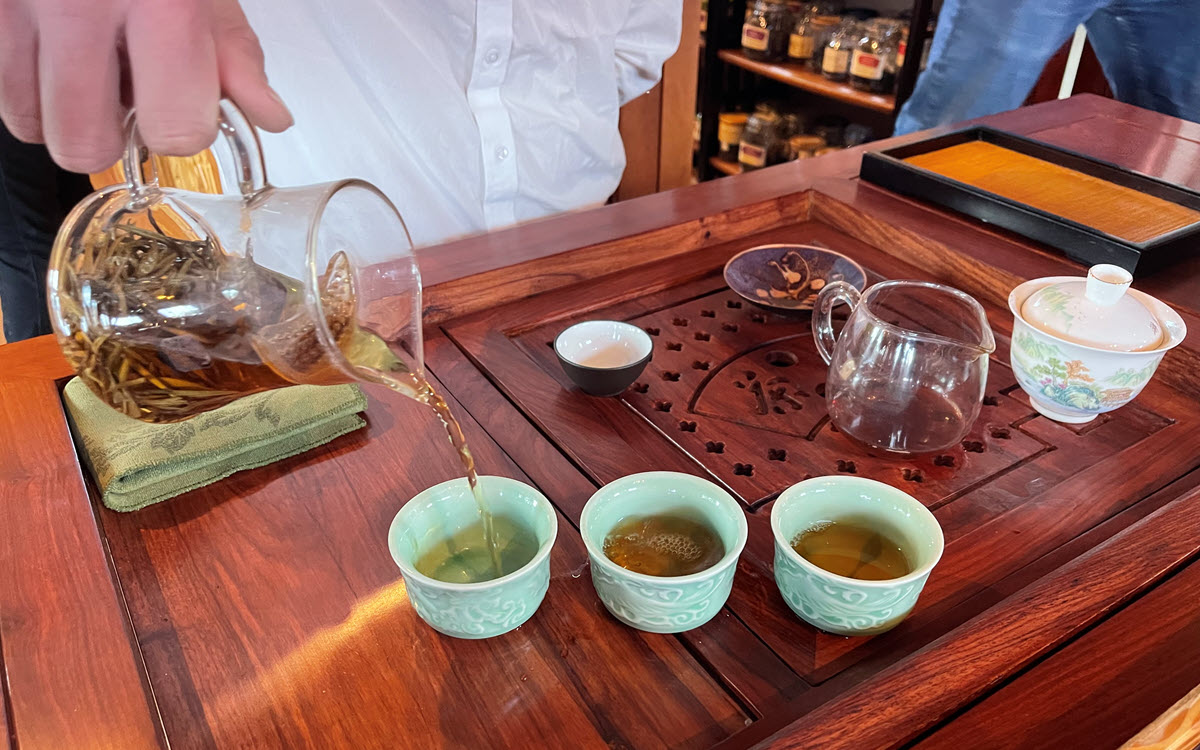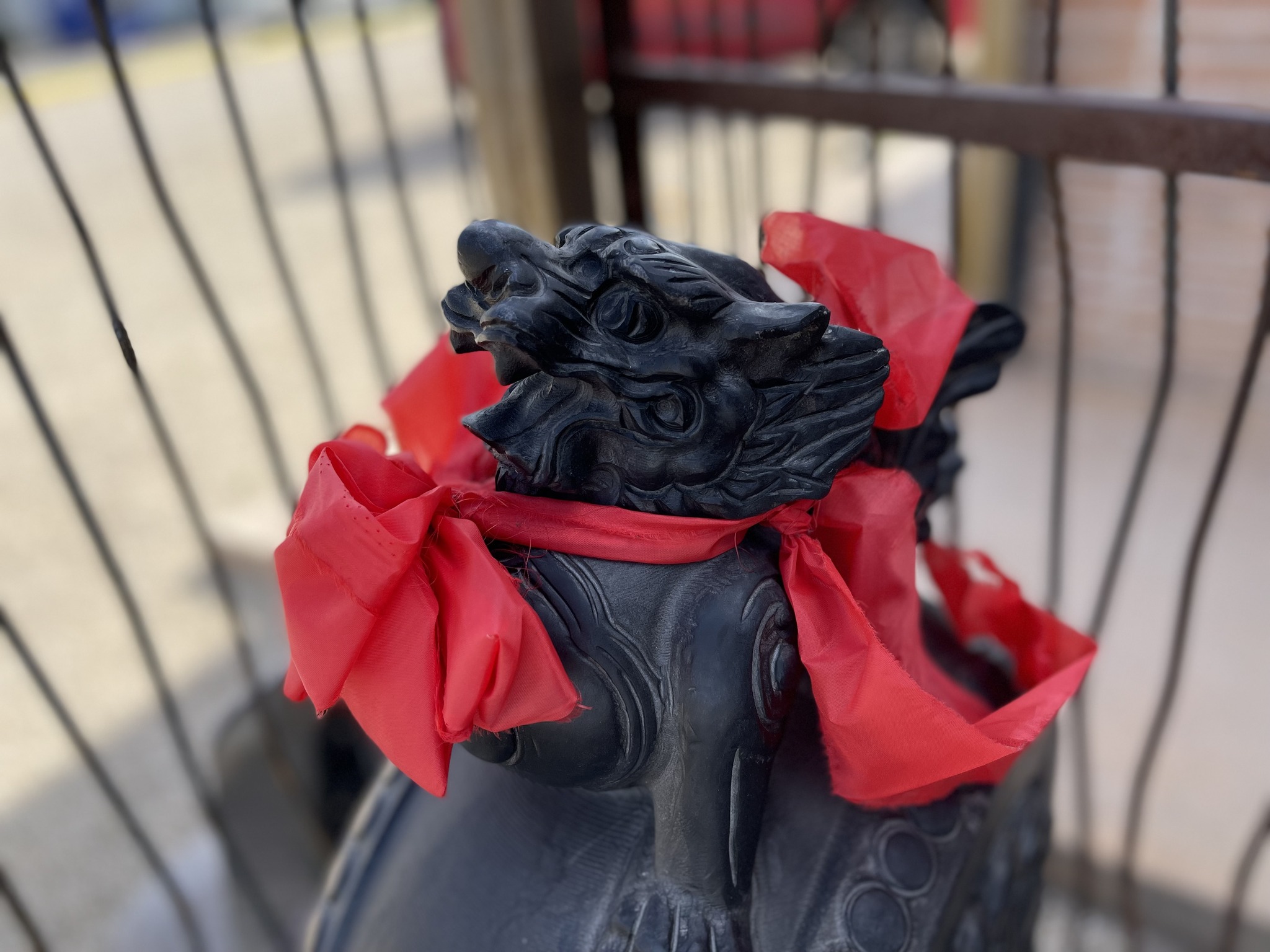Tea is well suited to experiential retail, a type of physical retail marketing that offers customers experiences beyond browsing. Tea retailers worldwide are experimenting with sophisticated sampling, live music, art, interactive displays, video walls depicting growers in the tea lands, and even making cameras available for customers to record and share experiences. Experiential tea retailers play an important role in converting commodity tea drinkers to informed enthusiasts.
Paper & Tea’s lofty ceilings and large windows have a captivating effect on passersby attracted to their brightly lit interiors, colorful displays, and a wide variety of fine teas to sample. Eduardo Molina, Head of Tea Experience at P&T, explains, “Our main idea, when somebody steps into one of our stores, is for customers to live an experience they will always remember — an experience they will share with others.” Molina is responsible for creating an alluring experience for every customer visit.
Listen to the interview.
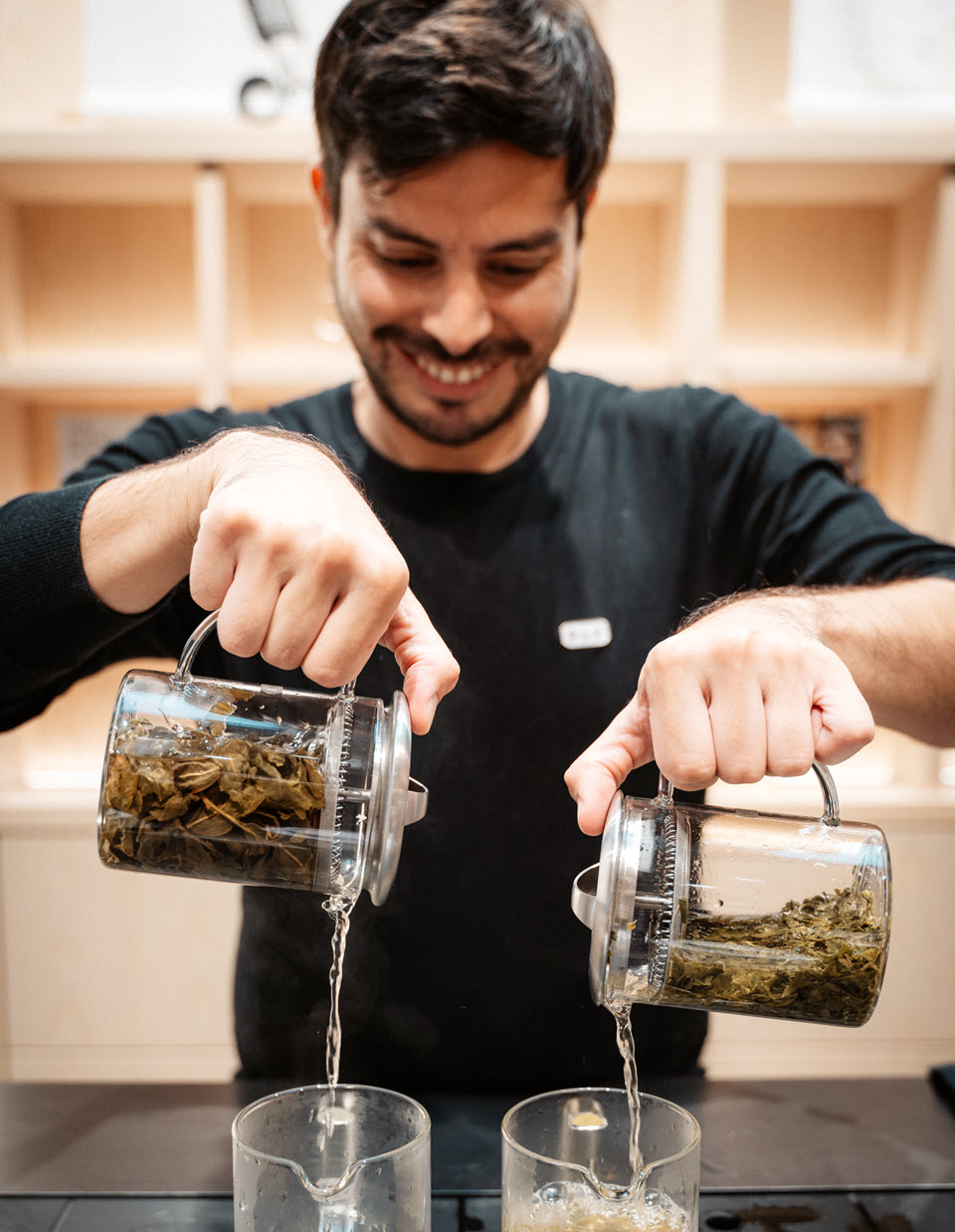
P&T is Not Just for Tea Drinkers
By Dan Bolton
Eduardo Molina, 37, is originally from Chile, a narrow coastal country whose people drink more tea than any country in South America. Eduardo embraced the tea-drinking culture, discovering his passion for tea working in hospitality at the Ritz Carlton Hotel in Santiago in 2007. He has since traveled extensively in the tea lands. “The culture and history of tea is fascinating,” he says. His special focus is training. “I love training people how to present, sell, and tell stories about tea,” says Eduardo. He has ten years of retail experience, including three years as the co-founder and tea sommelier of Adagio Teas in Chile. He taught at the Chilean Tea Academy and joined P&T in Berlin in May 2018 as product manager for new business development. As Head of Tea Experience, he is responsible for marketing the new properties and training staff. He leads the team that created the in-store experience at every location, including the company’s soon-to-open 31st store.
“At Paper & Tea, we create open spaces that celebrate community, where everyone is invited to share ideas and discover the beauty of life. We value quality, aesthetics, mindfulness, and artistry and want to offer products, experiences, and services that put a smile on your face.”
– P&T (www.paperandtea.com)
Dan Bolton: Why would someone operating a tea shop consider experiential retail? What benefits does it hold?
Eduardo Molina: It depends a lot on the kind of product that you are offering.
Not every product can be described as one of the best to put on a show, which is what we are trying to do in our stores.
When somebody steps into one of our stores, our main idea is to live an experience they will always remember — an experience they will share with others. We want them to say, “I had the most amazing experience.”
And that starts with welcoming. We hire “personalities,” so to speak —people who are easygoing, smiley, and full of good energy. Not necessarily tea-drinking people.
We are opening on the main streets in downtown locations where there is a lot of flow and a lot of people passing by, which is also a positive thing; it leads to the success of these openings.
We do have a lot of tea nerds joining our team, but for us, it’s not a requirement to drink tea. We know we will convert them anyway the same way we attract them. Yeah, it’s a given. Being inside of this environment will turn you into a tea drinker anyway.
Browsing is nothing new for someone who enters a store and tries on shoes, a T-shirt, or a sweater.
To be effective, you need to make a difference and that difference usually occurs with the body’s sensors. For example, when smelling something you haven’t smelled in a while, or when you smell something that reminds you of a moment you lived in the past, or when you taste something you have never tasted.
We play with those things as we welcome somebody in the store (or grab them from the street). We attract people with the whole design of our stores, which are very inviting, warm, and welcoming.
Our windows are very bright and positioned so that you can see inside the store, see what is happening, and awaken curiosity.
Once they are in, the process starts with a welcome tea we created.
So, we have something in every store right now. We have opened 28 in a year — 28 in six countries. So, it’s been crazy since almost every second week, there is an opening.
In the center of every store, there is the tea bar — I know, I know, having a place to taste tea is not a groundbreaking idea — but the way we present it can be described as “very deliberate.” We are a modern company. Paper and Tea is 12 years old. So, we’re not a 150-year-old company. We’re not a traditional tea house.
We are not a tiny house or a Japanese tea house. We are a European company run by young people. We want to create a contemporary concept. We want people to enjoy tea. We want people to bring tea to their lifestyle and make it part of their normal lives.
We want to make tea a part of their daily routine.
Paper & Tea Storefronts
Dan: I see your point about bright windows and an inviting storefront. Who is attracted to that? And why do you think they come into the store?
Eduardo: It’s someone who likes pretty things, somebody with a certain level of curiosity; we’re not a place only for tea drinkers. We believe we have the challenge of creating new tea drinkers. We want people to walk into the store, and even if you don’t drink tea, you will start because you feel that the atmosphere is so nice and want to be part of it.
I’ve seen a lot of people who say they don’t drink tea, but they buy a cup of tea, and they go home and say okay, I want to re-live the experience.
I want to do it with my friends because I’m surprised I want to do it with my family. So it’s also like a little chain effect. For every store that has opened, the escalation has been exponential.
Every week, more people come back because they heard about us from a friend or saw on social media that we were close by. It’s a very nice feeling that happens in the stores.
We have to recognize we are in the process of doing this.
People have come to me and said, ‘Paper and Tea is doing pretty well because you’re opening so many stores.’
“We are basically building the plane while we’re flying, we’re still creating new concepts, and there are still a lot of standards to be established, which can be seen, of course, as a downside. But on the other hand, for somebody who has the energy to create something from scratch, it’s also very motivational.”
– Eduardo Molina, P&T (www.paperandtea.com)
It’s like, no, no, we’re not doing well. Yet. We have an idea. We have a commitment. We put ourselves to the challenge. And we believe that people have to experience tea. It doesn’t matter how beautiful our website is; you must experience, smell, and taste it. And that’s the reason why we’re opening stores.
We want to be on every corner to have the chance to make you live the experience of drinking or preparing tea or talking to you.
And that’s why we’re opening so many stores in strategic locations.
Dan: Talk a bit about how you operate a store. You must invest in training staff skilled in tea and in helping customers understand how tea works so that they have interesting stories to share when they leave the store.
Eduardo: Exactly, absolutely. Tea is a product that offers the possibility to create this moment and make people leave these unique experiences. But it’s also a very complex product. To make those experiences possible, you need knowledgeable people who understand the product and the nuances.
We have roughly 80 different teas, 60% pure teas, and 40% blends. We have teas from 12 different origins and many different regions within those origins, so there is a certain degree of complexity. We manage it through a lot of training.
The centerpiece of each store is a tea bar. “I know, I know, having a place to taste tea is not a groundbreaking idea,” says Molina, “but how we present the tea is different. I describe it as “very deliberate.”
– Eduardo Molina, P&T (www.paperandtea.com)
We see our stores as more than just a shop where you go in and buy tea; for us, it’s a space where you can have these experiences. We look for people who have worked in hotels and restaurants. Maybe they don’t have selling experience, but we need this blend of people who may be very good at communication and selling. We need people who move very confidently behind the bar because the whole preparation will only impress if it’s done with confidence — and if you know what you’re doing, if you know the steps, and if you do it naturally.
Dan: Will you explain how changes in customer behavior have helped make this concept work?
Eduardo: I’m not German, so I’ve been trying to get to know German consumers. As you say, they have a very specific taste for herbals and fruit blends. Everything that happened with Corona brought a different consideration regarding what I’m drinking, what I’m eating, and what I’m consuming. Consumers ask, Is it healthy? Where’s it coming from? More and more, these kinds of questions are relevant for consumers.
We are listening, observing, and asking, ‘What kind of customer is coming into the store? What questions do they have? It’s super interesting because Paper and Tea, from a year ago, we had only five stores in Germany.
The customers we were targeting then were customers with a big interest in certain teas. They were looking for something specific for something unique.
Our concept has changed and evolved a little bit. And now, because we want to talk to more people, and talk to people who don’t know tea because we want to bring them in here. We currently have stores in Austria, Switzerland, Belgium, and Denmark. Their past dealings with German retailers were influenced by the fact Germany was one of the biggest Darjeeling buyers. They are, and I wouldn’t say they are over that, but now the Germans are also willing to try new varieties along with the Europeans. One of our stores’ most beloved varieties is Japanese green tea. We have a very nice selection of Japanese green teas, including Matcha, which you mentioned is very popular in the stores. Usually, when visiting the store, I get to prepare maybe 10 or 15 matchas, so we put up a big show at the bar. And then we show everybody how to improve it. Actually, the whole matcha market has exploded here for us. I am not a wholesale tea buyer for Paper and Tea anymore, but while I was doing it before expansion a year ago, we would sell out in a quarter of what we planned to buy for the whole year. It was crazy and extremely hard to plan. Germans are still big herbal drinkers, but they are very curious and are willing to explore new things thanks to tourism. I mentioned that Japanese green teas are very popular, but customers are seeking the benefits of drinking something healthy, that’s a big concern. And so that’s also a big priority for us as well. We are not a pharmacy, and we’re not a drugstore, but to be responsible for what we serve, we offer third-party certified teas and carefully explain how the teas are made.
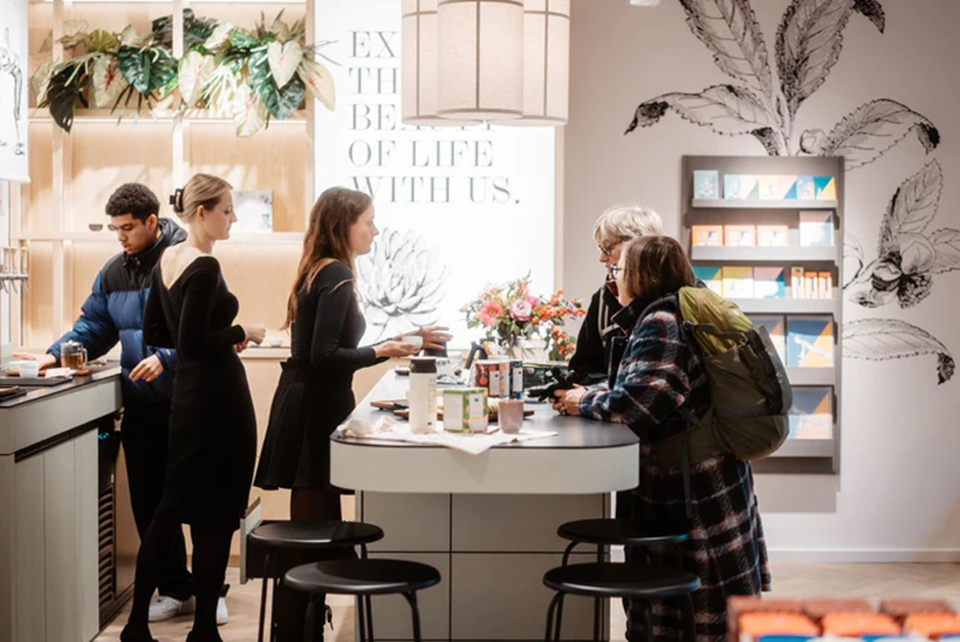
Dan: So, let’s talk about the downsides. There must be additional costs. How do you recover the added expense?
Eduardo: So there is a lot of time invested in training. A lot of resources must be invested for a store to fully run. And be confident that the store can function independently without somebody being there.
Rotation (turnover) is pretty big. So sometimes it happens that you invested in training, and then people don’t stay. It’s part of the business. We know how it is. So we always try to be one step ahead and make the best conditions for workers.
We are basically building the plane while we’re flying, we’re still creating new concepts, and there are still a lot of standards to be established, which can be seen, of course, as a downside. But on the other hand, for somebody who has the energy to create something from scratch, it’s also very, very motivational.
If you visit the “old” new stores, I say that because it’s the first one we started opening a year ago, and you visit a store that opened last week. You notice the difference because, in every store, we were learning. There has been a lot of trial and error. And I think that has given us an extremely good experience. And now we feel like we’re each time we’re closer to how it’s supposed to be, we’re not quite there. We’re excited that we’re not quite there yet because it would get boring.
Dan: Teabag prices can’t cover the cost of the kind of service, the more expensive locations, and the training. Merchandise certainly plays a part. How much do you have to charge to make it work?
Eduardo: I have to admit, I’m not the person who sets the prices. There are a lot of pricing strategies, but as you say, what we charge is not the price of the tea. What we charge covers the whole experience. When you go to a Michelin-star restaurant, it’s not the little piece of avocado you get but the way it’s presented, how it’s served, how it was kept before; it’s the whole experience you’re paying for.
We want to talk to everybody about tea. We want to bring new people into the world of tea. So, within our assortment, we have different lines and categories. There are teas that are, of course, more affordable for beginners. We call these Master Blends. The price of a tin depends on the tea variety, but roughly between 70 and 100 grams cost 15 Euros.
So I don’t know how much that is in dollars.
Dan: It’s pretty much one-to-one right now. (EUR1.00=USD1.09)
What’s the price of your most expensive tea?
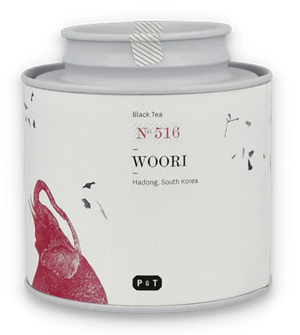
Grown in Korea’s Hadong Mountains, this black specialty tea relies on a unique double oxidation, rounded off by intensive roasting, for its sweetly smoky umami flavors. The resulting tea’s strong character and special aroma make it particularly suited for fine cuisine. € 59 | $65 for 60 g
Eduardo: I think right now that might be a Korean black tea that we have. And that would be roughly, I would say, a Euro per gram. A tin of 60 grams is roughly 60 euros. And that would be the top.
But we’re working on some other things that might be remarkable.
PAPER & TEA HAS A MISSION
– P&T (www.paperandtea.com)
To enrich life. With a positive view of life, we bring people and places together in joyful moments.
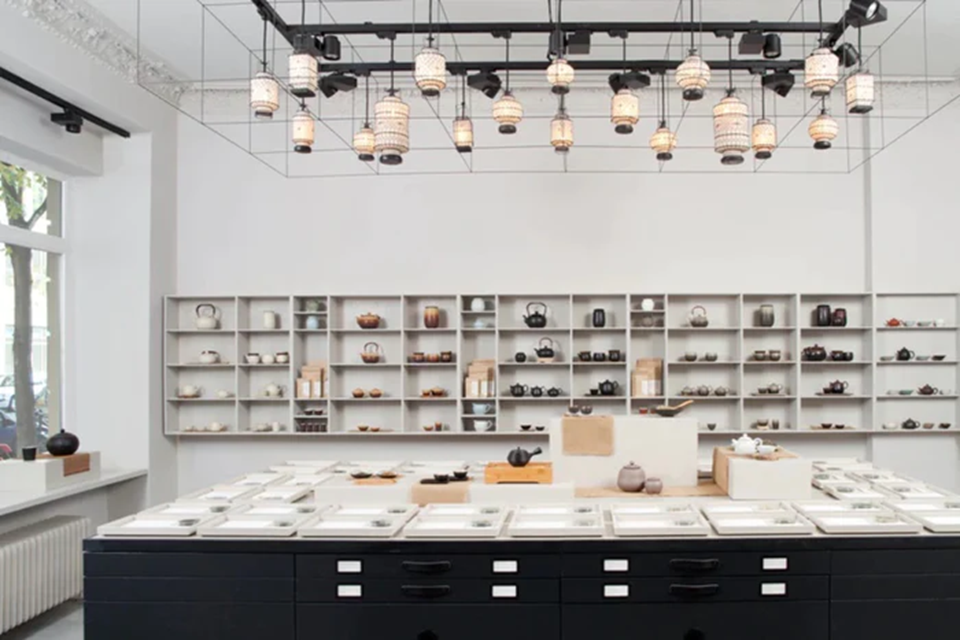
Paper and Tea’s First Location
Specialty tea elitists founded Paper & Tea (P&T) in 2012. Instead of locating their first storefront along Berlin’s busy Ku’damm (Kurfürstendamm), they chose Bleibtreustrasse in the quiet, affluent Charlottenburg neighborhood. Charlottenburg, established in 1705, was an independent city until 1920 and is known for its elegant, historic architecture and high-end boutiques.
P&T was never “staid” in the British connotation, manifesting in stores like the fabled Fortnum & Mason (founded 1707). Nor did P&T feature the popular apothecary-like retail “walls of tea” consisting of large tins from which tea was weighed and dispensed. The selection of paper products (notebooks, art prints, greeting cards, and pencils) conveyed a premium shopping experience.
P&T’s Berlin staff differentiated the store in a crowded market by brilliantly curating handcrafted teas from distant tea lands. The tea was displayed on shallow trays in small glass boxes, inviting consumers to sniff the aroma and study the dry leaf before sampling.
Reviewer Aarti Mehta-Kroll, in the publication Slow Travel Berlin, wrote in 2013 that the one-year-old P&T was one of Berlin’s “classiest tea houses,” likening the décor to that of a natural history museum.
She wrote that “ethically produced ceramics from Japan and Taiwan” are displayed on brightly lit minimalist shelves.
Notes describe each tea’s origin and unique characteristics. Tea is sold in 9, 20, 45, and 95-gram portions at prices that range from 8 to 60 Euros for 100 grams. “Korean teas are amongst the more expensive ones as they are mainly produced for local markets and are difficult to import,” she writes.
“In addition to the pure teas, one can also find a selection of hand-flavored teas by local suppliers using natural ingredients. A third unique offering is the infusions: lavender, mint, green rooibos, and ginger,” she wrote.
P&T’s catalog presented a winning combination, then and now.
Canadian Jens de Gruyter founded the company, and Thomas Langnickel-Stiegler was the chief tea expert in 2013.
BIZ INSIGHT — There are fine tea shops in every major city in Germany, with 3,804 tea companies in total. Berlin accounts for 8% market share (303 companies). Hamburg follows with 208 companies and a 5% market share. Consumers purchase 12.4% of the country’s tea at local and chain shops, including TeeGschewendner and Tee Ronnefeldt. Food retailers and discount stores hold a 57.5% market share, according to Deutscher Tee & Kräutertee Verband. In contrast, in the US, 80% of tea is purchased at grocery outlets, and only 7% of tea is sold at specialist tea retailers, according to German-based Statista market research. — Dan
Photos courtesy Eduardo Molina and Paper and Tea, Berlin
Latest Episodes
Powered by RedCircle
Share this post
Episode 144 | Paper & Tea’s lofty ceilings and large windows have a captivating effect on passersby attracted to their brightly lit interiors, colorful displays, and a wide variety of fine teas to sample. Eduardo Molina, Head of Tea Experience at P&T, explains, “Our main idea, when somebody steps into one of our stores, is for customers to live an experience they will always remember — an experience they will share with others.”

